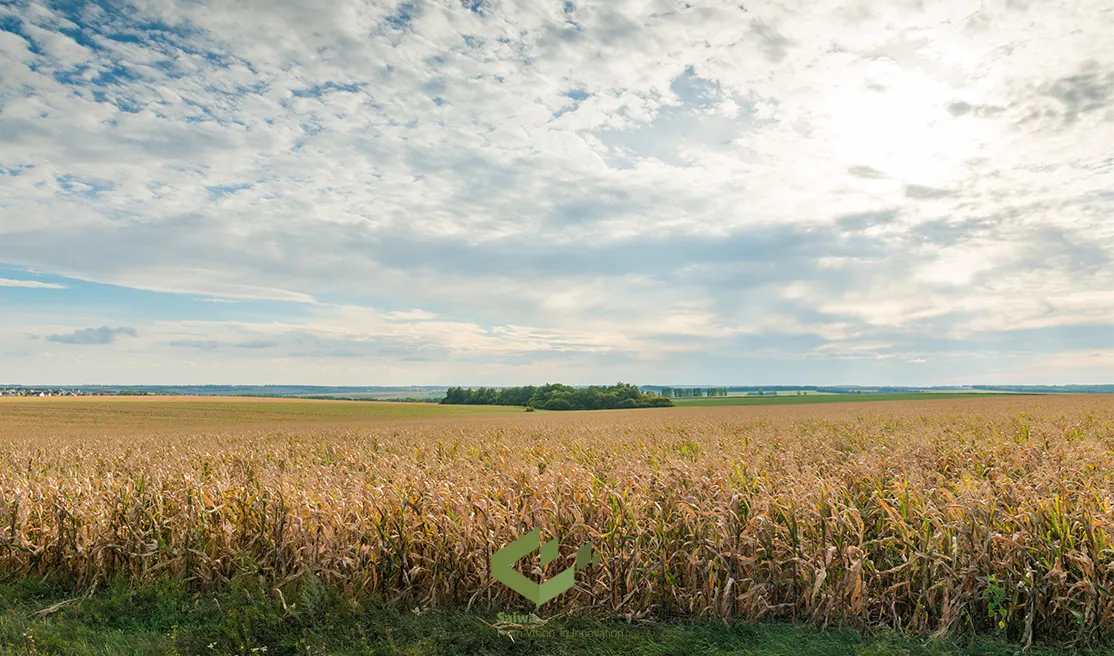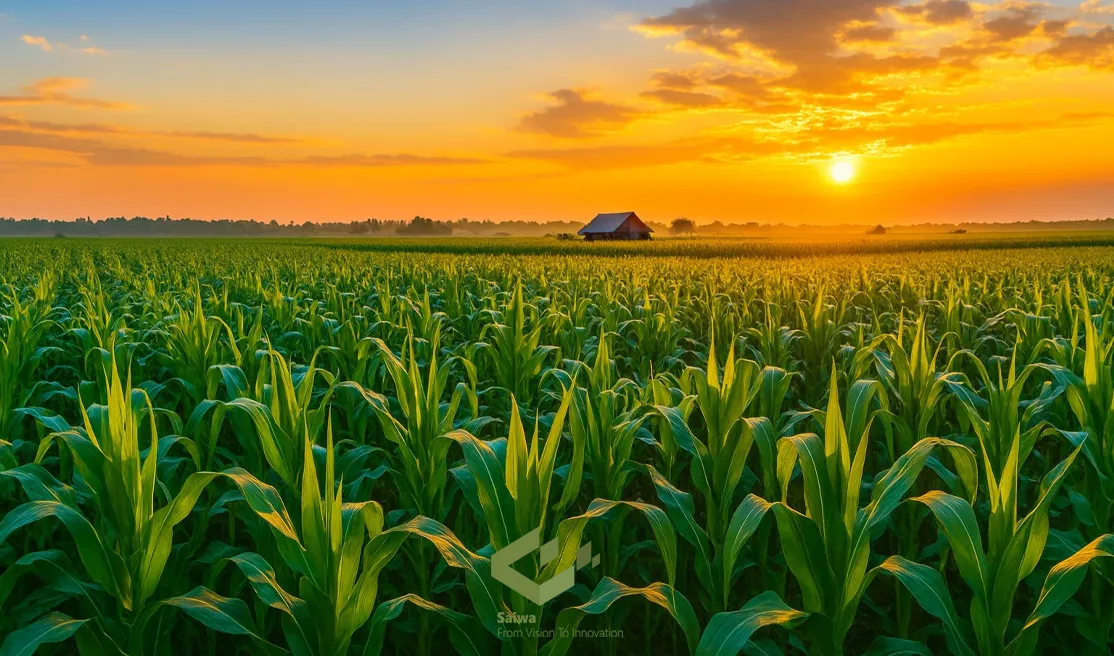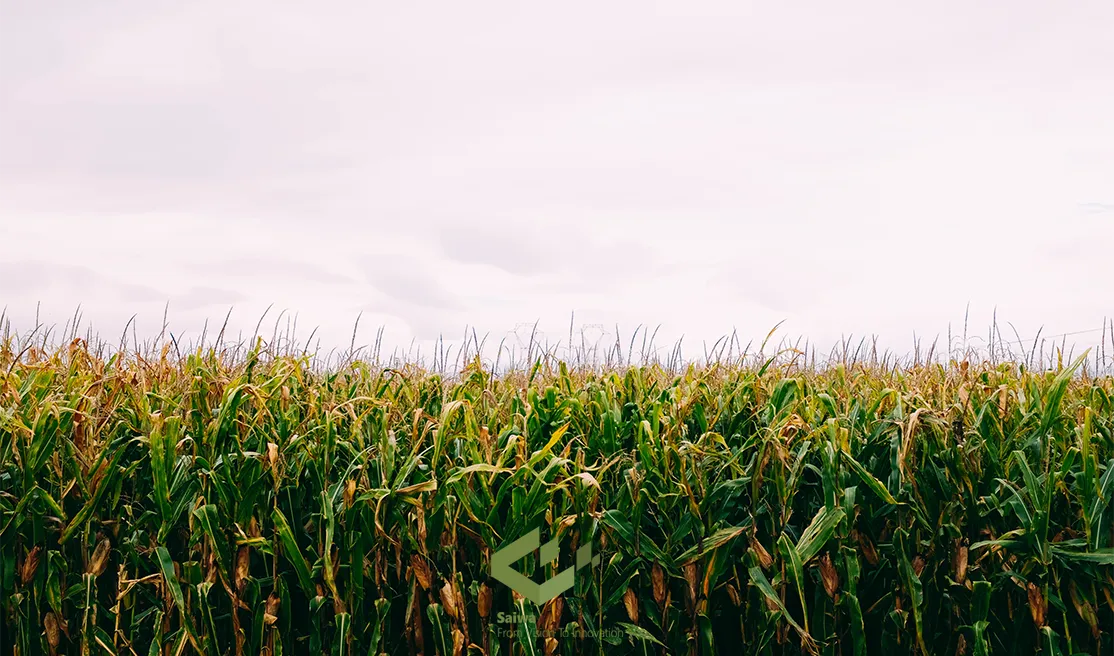 Maize is one of the world’s most important crops, playing a crucial role in meeting food, feed, and industrial demands. Its cultivation is challenged by various weeds that compete for essential nutrients and sunlight. These weeds can reduce maize yields and affect crop quality if not managed properly. Early and effective weed control plays a vital role in maximizing maize productivity and ensuring sustainable farming practices.
Maize is one of the world’s most important crops, playing a crucial role in meeting food, feed, and industrial demands. Its cultivation is challenged by various weeds that compete for essential nutrients and sunlight. These weeds can reduce maize yields and affect crop quality if not managed properly. Early and effective weed control plays a vital role in maximizing maize productivity and ensuring sustainable farming practices.
Sairone, an AI-powered platform developed by Saiwa, provides advanced weed control services for agriculture, horticulture, and greenhouse operations. By combining drone imagery, computer vision, and machine learning, Sairone delivers precise, data-driven recommendations to effectively control weeds in maize fields. This smart approach helps reduce herbicide use, lower costs, and support sustainable, high-yield maize farming give precise data by crop yield estimation.
In this blog, we’ll explain how to control weeds in maize by covering common weeds, cultural and conventional strategies, and advanced weed control methods.
Common Weeds in Maize Fields
Effective weed management begins with identifying the most prevalent species that compete with maize for nutrients, water, and light. Below are some of the most common weeds found in maize fields:
Fleabane (Conyza canadensis): A persistent annual weed that grows in multiple seasons and is known for developing resistance to glyphosate. It spreads rapidly, especially in no-till maize fields.
Ragweed (Ambrosia artemisiifolia): A native summer annual that frequently invades maize fields. It grows aggressively and produces abundant pollen, exacerbating allergies and competing heavily with maize.
Thistle (e.g., Canada Thistle): A perennial broadleaf weed with deep roots and spiny foliage. Control is difficult and often requires repeated fall or early summer herbicide applications targeting underground stores.
Goosefoot (Chenopodium spp.): Includes common lambsquarters, a fast-growing annual that often colonizes disturbed soils early. It can quickly dominate fields before maize establishes.
Green and Yellow Foxtail (Setaria spp.): These summer annual grasses feature bristly seedheads and aggressively compete with maize. Control is achievable with pre- and post-emergence herbicides and timely tillage.
Velvetleaf (Abutilon theophrasti): A broadleaf annual weed that competes strongly with maize and can inhibit early crop growth through allelopathic effects.
Cultural Weed Control Techniques for Maize

Cultural methods focus on adjusting farming practices to reduce weed pressure naturally. In maize cultivation, these strategies support long-term weed suppression while promoting healthier crop growth.
Crop Rotation
Crop rotation disrupts weed life cycles by changing the growing environment regularly. Alternating maize with legumes, cereals, or root crops can reduce weed pressure by preventing weed species from adapting to a single crop type. Certain rotations also allow for the use of different herbicides, improving control efficiency.
Stale Seedbed
This technique involves preparing the seedbed early, and then allowing weeds to germinate before maize is planted.. These early-emerging weeds are then destroyed using shallow tillage, flame weeding, or non-residual herbicides. By reducing the weed seed bank before sowing, this method limits early competition with maize seedlings.
Narrow Row Spacing
Planting maize in narrower rows helps create quicker canopy closure. This reduces sunlight penetration to the soil surface, suppressing weed emergence and growth. Faster canopy development gives maize a competitive advantage, especially during the critical early growth stages.
AI-Powered Weed Control Strategies in Maize Farming
Artificial Intelligence (AI) is transforming how farmers answer the key question: How do you control weeds in maize? By integrating AI with drone imaging, smart sensors, and machine learning algorithms, weed control in maize has become more accurate, timely, and cost-effective.
Aerial Weed Detection: AI-powered drones capture high-resolution images of maize fields, allowing for early-stage weed identification. By detecting weeds before they spread, farmers can act faster and prevent crop competition.
Precision Mapping: AI analyzes spatial data to generate detailed weed distribution maps. These maps guide targeted herbicide applications, reducing chemical use and protecting maize growth.
Predictive Weed Management: Machine learning models evaluate field history, soil health, and weather forecasts to predict when and where weed outbreaks are likely to occur, enabling proactive control strategies.
Autonomous Treatment Systems: AI-guided machinery can navigate maize rows, distinguish between crops and weeds, and apply treatment only where needed—minimizing damage and improving efficiency.
As AI advances, it is reshaping how we control weeds in maize, making the process smarter, more sustainable, and better aligned with the needs of modern agriculture.

Integrated Weed Management (IWM) Principles
Integrated Weed Management (IWM) combines multiple strategies to achieve effective and sustainable weed control in maize fields. It integrates cultural, mechanical, and chemical methods such as crop rotation, stale seedbeds, narrow row spacing, and timely herbicide applications to suppress weeds comprehensively. Regular monitoring and early detection allow farmers to target weeds before they become established.
Rotating herbicides with different modes of action and incorporating non-chemical practices reduces the risk of herbicide resistance. Additionally, advanced technologies like AI-powered weed detection and precision spraying enhance control accuracy while minimizing chemical use. This holistic approach supports long-term soil health, biodiversity, and cost-effective maize production.
Early Detection and Timely Control
Timing plays an important role in managing weeds in maize. Pre-emergence herbicides applied right after planting create a protective fence that stops weed seeds from growing. Post-emergence treatments focus on weeds when they are young, usually within the first 1 to 3 weeks after maize emerges. Sticking to this schedule allows maize plants to get plenty of sunlight, soil moisture, and nutrients when they are most vulnerable. If herbicide application or mechanical intervention is delayed, weeds can take hold, making them tougher to control later and directly lowering crop yield.
The importance of early weed detection cannot be overstated
Weeds that emerge alongside maize seedlings compete aggressively for resources, stunting growth and lowering overall productivity. Identifying and managing weeds during the critical first 7–10 days after emergence allows farmers to apply precise, timely interventions, protecting the crop’s potential from the outset. Early control also helps prevent the spread of herbicide-resistant or particularly aggressive species, which can persist across multiple seasons if left unchecked. By combining careful timing with vigilant early detection, maize producers not only maximize yields but also reduce long-term management costs, minimize environmental impact, and maintain healthy, productive cropping systems. Effective timing and early action form the foundation of a successful, sustainable maize production strategy.

How Sairone Simplifies Weed Control in Maize
Sairone uses advanced technologies, such as AI and machine learning, as well as drone imaging, to make weed control in maize more efficient and precise. By analyzing a variety of data sources, including aerial, ground-level, and multispectral images, Sairone can accurately detect early stages of weed growth. This allows for targeted treatment recommendations that reduce herbicide use and costs while protecting the health of the maize crop. Sairone provides farmers with a smart, data-driven tool for effective and sustainable weed control.
Conclusion
Controlling weeds is essential for healthy crop growth and maximizing maize yields. Understanding common weeds and applying cultural and modern technological strategies allows farmers to effectively manage infestations. Integrating these approaches ensures sustainable weed control while minimizing environmental impact. Thanks to innovative tools and methods, controlling weeds in maize is now more precise and efficient than ever, helping farmers protect their investment and boost productivity.
Note: Some visuals on this blog post were generated using AI tools.

